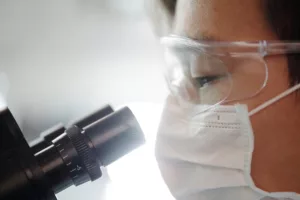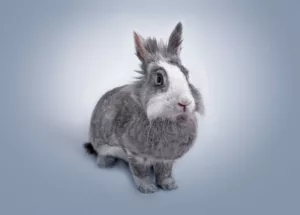Innovations in Ethical Cosmetic Testing

In the world of cosmetics and beauty products, the quest for safe and effective formulations often involves testing. Historically, this testing was done on animals, leading to ethical concerns and the need for change. In recent years, there has been a significant shift towards cruelty-free testing methods, allowing us to enjoy our favorite products without compromising the welfare of animals. In this blog, we’ll delve into the differences between cruelty-free testing methods and animal testing, shedding light on the importance of choosing ethically tested beauty products.
Animal testing has a long and controversial history in the cosmetics industry. For decades, rabbits, mice, and other animals were subjected to cruel experiments, including skin and eye irritation tests, to determine the safety of cosmetic products. This practice raised ethical concerns about animal suffering and led to a growing demand for cruelty-free alternatives.
Cruelty-Free Testing Methods
Cruelty-free testing methods are the ethical alternative to traditional animal testing. These methods prioritize the safety of both consumers and animals, using innovative and humane approaches to evaluate product safety and efficacy.
1. In Vitro Testing
One of the most significant advancements in cruelty-free testing methods is in vitro testing. This technique involves testing cosmetics on human cell cultures grown in a laboratory setting. Scientists can simulate various skin and eye conditions to assess how products may affect human tissues, all without harming animals. This method provides accurate results while eliminating the need for animal experimentation.
2. Computer Modeling
Computer modeling, also known as in silico testing, uses advanced computer algorithms to predict the effects of cosmetic ingredients on human skin and eyes. This innovative approach reduces the need for physical testing and offers a cost-effective and cruelty-free alternative.
3. 3D Bioprinting
3D bioprinting takes cruelty-free testing to the next level. It uses 3D printers to create living human tissue models that mimic the structure and function of real skin and eyes. These bioengineered tissues can be used to test cosmetics for irritation and safety, offering results that are relevant to humans without harming animals.
4. Human Volunteer Studies
Many companies now rely on human volunteer studies to evaluate the safety and efficacy of their products. These studies involve willing participants who use the products, allowing researchers to gather real-world data on their safety and performance. While this method is not entirely free from ethical concerns, it is a far more ethical option than animal testing.
Why Choose Cruelty-Free Beauty Products?
- Animal Welfare: Perhaps the most compelling reason to choose cruelty-free beauty products is to protect animals from unnecessary suffering. By opting for products that use cruelty-free testing methods, you contribute to the reduction in animal testing practices.
- Human Relevance: Cruelty-free testing methods often provide more accurate results since they are designed to mimic human responses. This means that the products you use are more likely to be effective and safe for you.
- Innovation and Progress: Supporting cruelty-free brands encourages innovation in the cosmetics industry. As technology advances, these brands continue to develop more sophisticated and accurate testing methods.
How to Identify Cruelty-Free Products
Identifying cruelty-free beauty products has become more accessible due to increased consumer awareness and efforts by advocacy organizations. Look for the following symbols or certifications when shopping for cruelty-free cosmetics:
- Leaping Bunny: The Leaping Bunny logo is a globally recognized symbol for cruelty-free products. Brands bearing this logo have undergone a thorough certification process to ensure their products and ingredients are cruelty-free.
- PETA’s Beauty Without Bunnies: People for the Ethical Treatment of Animals (PETA) also provides a cruelty-free certification, known as Beauty Without Bunnies. Products and brands certified by PETA meet strict cruelty-free standards.

- Cruelty-Free Statements: Many brands proudly display cruelty-free statements on their packaging or websites. Look for statements like “Not tested on animals” or “Cruelty-free.”
- Vegan Certification: If you’re looking for products free from animal-derived ingredients, check for vegan certifications, as these products are both cruelty-free and free from animal-derived components.
The beauty industry is evolving, and cruelty-free testing methods are at the forefront of this transformation. By choosing cruelty-free beauty products, you contribute to a more ethical and compassionate industry. Remember, you have the power to make a difference with your purchasing choices. Opt for products that reflect your values, prioritize animal welfare, and promote the use of innovative, humane testing methods. Together, we can create a future where beauty is cruelty-free, both behind the scenes and in our everyday routines.




